A divide is growing between leaders and employees in the AI Age. While professionals at every level of the organization are quietly upskilling, experimenting, and integrating AI into their daily work, many leaders remain stuck in last decade’s mindset; reactive, hesitant, and hands-off. With EU “duty to train” regulations around the corner and widespread market disruption underway, we examine “AI Leadership Lag” and offer five ways to bridge the gap.
Fiona Passantino, AI Leadership
Where are the leaders?
I’m training 25 eager professionals, gathered in a hotel conference room to engage in an intensive, hands-on training session. What’s AI? How does it work? What are the ways to integrate it into your workflow?
Predictably, the professional students are hungry, curious and eager to experiment. They admit, sheepishly, that their workplace does not provide them with professional AI accounts, so they burn through a months’ worth of tokens before the lunch break. Some are even there without their managers’ explicit consent; learning in the dark.
Participants fill in a short questionnaire about their AI skills and awareness as well as their formal organizational AI policy. Mostly, they learn in a vacuum; unsupported, lacking rules and policy to guide them.
Where are the leaders? In a world where mid-level leaders micro-change-manage every workplace process, why are aren’t they getting ahead of this looming transformation? Where is the stone “Ten Commandments of AI” tablet hanging in the lobby? Where are the printed beer coasters showing the rules for data management and naming conventions? Until now, AI adoption has largely been a bottom-up phenomenon, with mostly silence at the top.
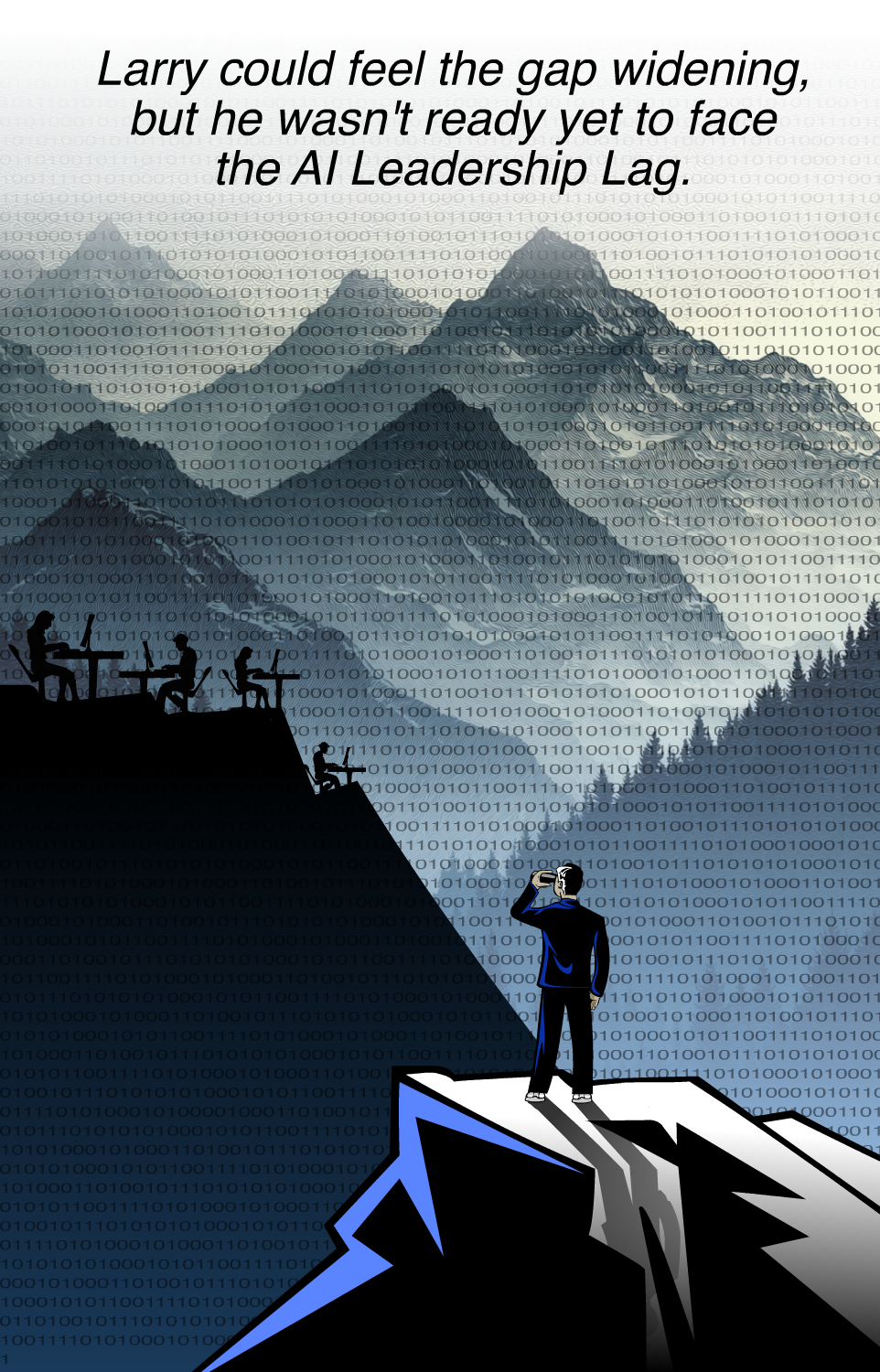
The Great Divide
While the frontline builds AI fluency, leadership is still stuck in last decade’s playbook; reactive, re-orging their way through disruption, letting their IT departments play with a few automated solutions and leaving the rest to figure things out on their own.
The “AI Leadership Lag”[i] describes the widening gap between the AI literacy of employees and those of their leaders. Only 15% of US employees strongly agree that their organization has communicated a clear AI strategy.[ii] More than half of employees, 58%, have been taking on AI literacy skills on their own.[iii]
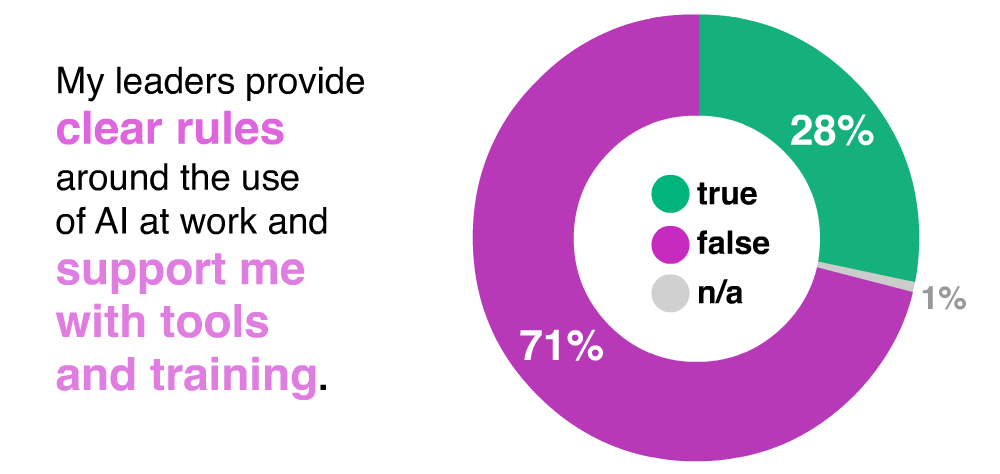
If you examine a typical graph of a working community, you will find that most people fall on the curve of “early adopters”, “mid-late adopters” and “laggards”. Leaders, sadly, largely fall on the wrong side of the tech adoption curve when it comes to AI.
Leaders often assume that their employees will “figure things out” themselves. The young ones know everything about technology. This might be true about smartphone and social media (ever watched your 14 year-old swipe their way through TikTok?), it does not translate to AI. Maybe it’s because AI is discouraged in school. Educational AI policy is equally stuck in the past, resulting in GenZs and Alphas hitting the workforce lacking crucial AI skills.
aged 18-24: 19.40%
aged 25-34: 31.47%
aged 35-44: 18.11%
aged 45-54: 15.15%
aged 55-64: 9.81%
aged 65+: 6.07%
Soon top-down AI integration will no longer be optional. Article 4 of the EU AI Act requires deployers to ensure AI literacy of their staff, customers and suppliers, going into full force in 2026.[iv]
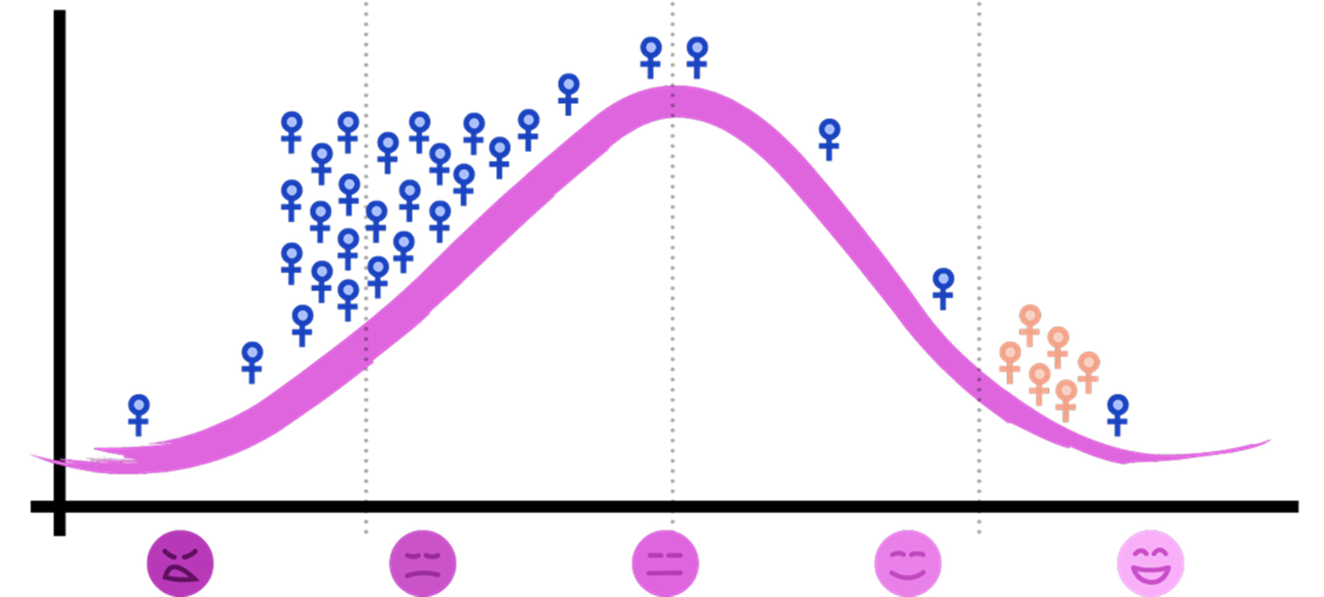
What is “AI Leadership”?
Some estimates show that over 80% of AI projects fail; twice the failure rate of non-AI IT projects.[v] AI literacy for leaders isn’t just about learning how to clone a voice or write an efficient prompt. It’s about deeply understanding what AI is, what it can and can’t do, and comparing this with the challenges, goals and the limits of your organization, the array of talent you are working with and the strategic vision you have for the next 2-3 years.
The AI-Integration Roadmap is a strategic route that enables leaders to identify the teams and processes that would benefit most from AI reinvention and understand what it takes to implement AI successfully in a limited organization. AI needs data quality, architecture, hardware, structure, talent. Your Working Humans need training, support, tooling, vision. And the customer? In the AI-Age, they crave a genuinely Human customer experience.
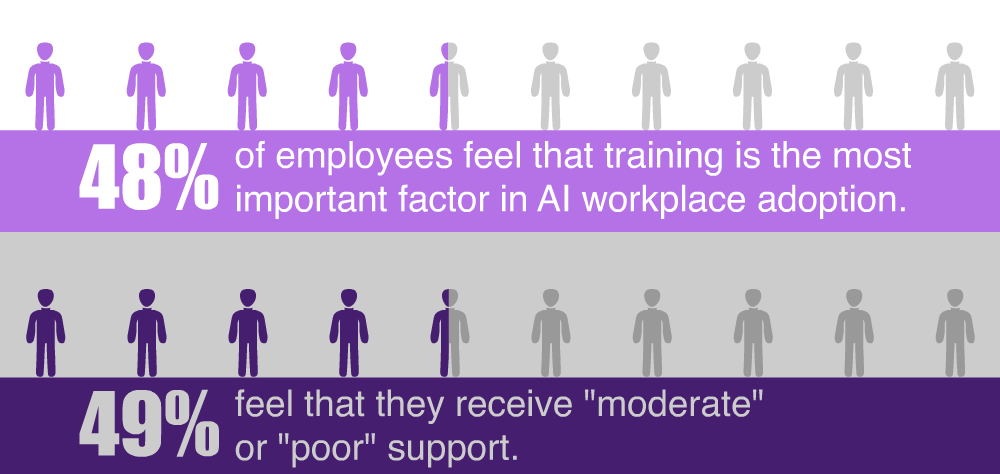
Getting Started Today
AI-Powered Leadership starts by using AI right now; for small things, every day, to develop a feeling for how the AI mind works, to cultivate solutions and a mindset for expansion. It means never saying “that’s too complicated” or “AI isn’t right for me” but creating micro-test-loops for the tasks that distract, suck up your time, hijack your brain and prevent you from connecting with the Humans in your care. It’s astounding how much real estate these unpleasant Human interactions occupy in our brain as leaders, how much sleep we lose, and how distracted we become.
1. Voice-Activated AI coaching
Do you have a difficult conversation ahead with a supplier, an employee, a board member or angry enterprise customer? Download your favorite Large Language Model to your phone, hit the mic key and explain what you’re dealing with in natural language. Voice-activated AI will listen patiently and provide the language you need to resolve the problem. Discover what a good advisor AI can be; a neutral, positive, non-judgmental coach.
2.Target your community
Focus your budget and attention onto two main groups of your working community: the AI aficionados and top-level leadership. The AI enthusiasts are your most valuable assets; they want to learn more, use AI widely, and play a role in organizational change. But if they don’t have a place to put this energy, they will leave. Identify these individuals and provide budget for their training.
3. Allocate training budget
Let the AI enthusiasts lead the way. This group will form the basis of your internal AI Center of Excellence (AICoE), helping guide policy, choose tooling and design training for everyone else. Give them space; one day a week to learn and experiment. And then sign yourself up for AI leadership training.
4. Open the conversation
Gather your troops and host a quick-and-dirty “Lunch & Learn” session on AI. No PowerPoints, no scripts or demos necessary. Leverage your new AICoE for in-house expertise and set the stage for an open Q&A. If you’re ambitious, bring in an external expert.
5. Get an AI Coach
If you want to start learning about AI today, don’t wait until you have a full day available in your busy schedule to engage in your training, pull in a good AI coach for one hour a week until you have developed the baseline skills you need to write policy.
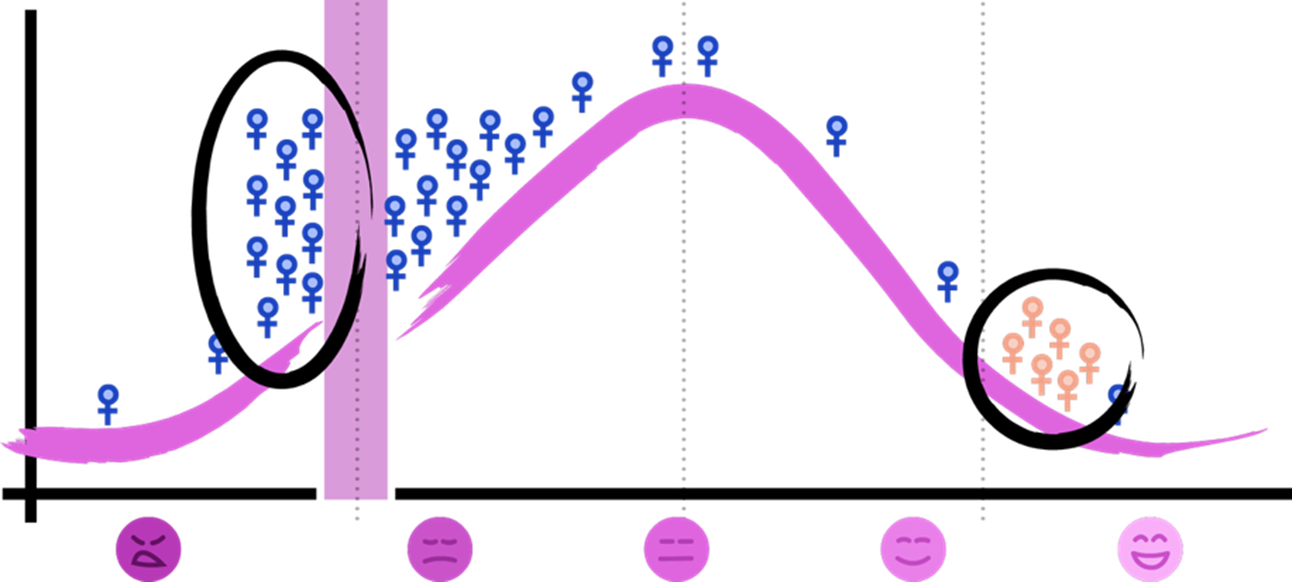
Strategic AI Leadership
Leaders understand that the best strategic decisions are made from a position of knowledge and power, with time on their side. Not in a reactive crouch. Good leaders stay ahead of the trends and guide their Humans towards the best versions of themselves, reducing the need for sweeping, panic-driven layoffs, customer churn and disruption, seemingly, coming from nowhere.
AI Leaders know when to automate existing processes, when to keep things decidedly Human, and when to reimagine the org charts. AI leaders understand what all members of the working community need to enable a successful transition to an AI-Powered organization, from the drivers the analog laggards, and how to engage every member to reach their potential.
Need help with AI Integration?
Reach out to me for advice – I have a few nice tricks up my sleeve to help guide you on your way, as well as a few “insiders’ links” I can share to get you that free trial version you need to get started.

No eyeballs to read or watch? Just listen.
Working Humans is a bi-monthly podcast focusing on the AI and Human connection at work. Available on Apple and Spotify.

About Fiona Passantino
Fiona helps empower working Humans with AI integration, leadership and communication. Maximizing connection, engagement and creativity for more joy and inspiration into the workplace. A passionate keynote speaker, trainer, facilitator and coach, she is a prolific content producer, host of the podcast “Working Humans” and award-winning author of the “Comic Books for Executives” series. Her latest book is “The AI-Powered Professional”.
[i] A fully made-up term that sounds like it should exist
[ii] Castrillon (2025) “The No. 1 Leadership Skill That’s Non-Negotiable For Employers In 2025” Forbes Magazine https://www.forbes.com/sites/carolinecastrillon/2025/06/20/the-no-1-leadership-skill-thats-non-negotiable-for-employers-in-2025/
[iii] Bamboo HR (2025) “Clarity over Chaos: Bridging the AI Divide” Bamboo HR https://www.bamboohr.com/resources/data-at-work/data-stories/ai-usage-data-report#:~:text=The%20groups%20with%20the%20most,or%20integrated%20into%20their%20workflows
[iv] de Boer (2025) “New regulatory requirement effective 2 February 2025 AI literacy under the EU AI Act” PWC Blog https://www.pwc.nl/en/services/audit-assurance/pwc-accountancy-insights/data-it-and-internal-control/ai-literacy-under-the-eu-ai-act.html#:~:text=Article%204%20of%20the%20AI%20Act%20requires%20that%20’providers%20and,account%20their%20technical%20knowledge%2C%20experience
[v] Ryseff, De Bruhl, Newberry (2025) “The Root Causes of Failure for Artificial Intelligence Projects and How They Can Succeed” The Rand Corporation. https://www.rand.org/pubs/research_reports/RRA2680-1.html

